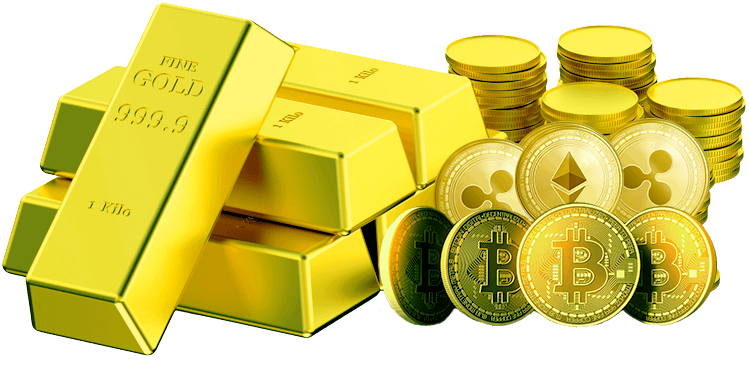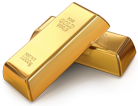Glossary
Getting a little overwhelmed by all the unfamiliar “lingo” words being slung around out there in the gold investment world? You’re not alone! Here are a few terms and their definitions to help you on your way to becoming a savvy investor.
- AGW
- Stands for Actual Gold Weight which refers to the amount of pure gold in an object. Any alloys are part of the gross weight of a gold coin, but not part of the AGW.
- Alloy
- A mixture of two or more metals.
- Assay
- Also called metallurgical assay, is a biochemical test done on precious metals to determine the content and purity of the object. A buyer has to know the purity of the gold they are purchasing, so they will usually have an assay done (or assayed).
- Attributes
- This term usually relates to the different elements on how a coin comes to being graded. The main focus points are any marks (like hairline scratches), luster (the strength of the light reflected off the surface), strike (how complete the intended detail on the coin’s design is), and eye appeal (the overall appearance of the coin).
- Bear Market
- Sometimes called “bearish trend”, it is a general decline (negative sentiment) in the stock market or a particular commodity during at least a two-month period or longer. It is a shift from high investor optimism to widespread investor fear or pessimism. Also called a “Heifer Market” in relation to being the opposite of a bull. In this market, there are more sellers than buyers (or high supply with little demand). Shorter trends do not qualify; it must be a long trend with significant movement.
- Bullion
- Physical metal that is minted and shaped for easy storage and transport. It generally doesn’t have any collector’s value. Most commonly found in two forms:
- Coin Bullion
- A precious metal that is minted and in the round shape of a coin often with a legal trade value attached. It should have a plain stamp certifying its weight and purity and sometimes has an additional stamp (anywhere from plain to highly decorative) indicating the manufacturer.
- Bar Bullion
- A precious metal that is minted and formed into a bar shape. Like coin bullion, it will have a stamp stating its purity and weight and sometimes has another decorative stamp signifying the manufacturer’s identity.
- Bid/Ask/Spread
- These terms are related to the spot price (see below). Bid is the price that the buyers are offering to pay; ask is the price the sellers are asking for; and spread is the difference between the two. Generally speaking the spread for the price of gold is small percentage-wise, but with the price of gold being so high a spread of dollars (not cents) is not uncommon.
- Bull Market
- Sometimes called a “bullish trend”, it is a general increase (positive sentiment) in investor confidence and expectation of the future price to increase. It typically starts before the economy shows signs of recovery. In this market, there is a low supply of securities and a high demand of the same. As with a bear market, this trend must be long-lived and with significant movement to qualify as a bull market.
- ETF
- Exchange Traded Fund. A fund that’s traded publicly which buys shares of gold, but in which you do not actually have any physical metal.
- Face Value
- The value stated on the face of the coin. These values are usually very different from the actual value of the precious metal used to make the coin.
- Fineness
- A way to measure purity in precious metals in parts per thousand (0.001). The maximum fineness is .999 even if the gold is absolutely pure.
- Gold Eagles
- Also called American gold eagles, they are 22 karat gold bullion coins mixed with copper and silver to harden and add luster. Eagles are backed by the US government in purity and content and come in the following weights: tenth of an ounce (1/10 oz), quarter ounce, (¼ oz), half ounce (½ oz), and whole ounce. There are pictures of eagles on the back of the coin.
- Gold Maple Leaf
- Also called Canadian gold maple leaves, they are 24 karat gold bullion coins made by the royal Canadian mint. They are the official gold bullion of Canada who first began making these coins in 1979. Bullion coins made between 1979 and 1982 have a guaranteed fineness of 0.999. They come in the following weights: twentieth of an ounce (1/20 oz), tenth of an ounce (1/10 oz), quarter ounce (¼ oz), half ounce (½ oz), and whole ounce.
- Ingot
- Large gold bars that are produced by pouring the liquid hot metal (usually at the mine itself) into molds; unlike the smaller bars that are minted or stamped from appropriately rolled sheets of gold. Most commonly found in the shape of a brick and can have a weight of several hundred pounds. All Ingots should be assayed and only be purchased from a trusted source.
- IRA
- An IRA is an investment account that allows people to contribute up to $5,500 tax deferred annually, or $6,500 for people older than 50. IRA accounts grow tax deferred, but any withdrawals are taxed as income at the time of withdrawal. Anyone who makes a withdrawal before age 59.5 may also be subject to a 10% federal tax penalty, and possibly additional penalties from the State. IRA accounts are typically invested in mutual funds, stocks, bonds, and index funds. IRA acounts can also hold certain types of pure bullion such as gold and silver.
- Karat
- A measure of purity in parts per 24, usually used with jewelry. For example, a 22k gold bar can contain 22 parts gold mixed with 2 parts silver and/or copper.
- Krugerrand
- A gold bullion coin first minted by the government of South Africa in 1967. Krugerrand coins are 22 karat gold mixed with copper, making them have a more hardness and an orange colored appearance unlike silver alloy coins. They are available in the same weights as the American gold eagle coins.
- Mining Stock
- A stock in a mining company that is publicly traded. Similar to an ETF except it’s only dealing with one company.
- Purity
- The amount of a precious metal in an alloy. It can be portrayed in karats (parts per 24), fineness (parts per 1000), or percentage (parts per 100).
- Rounds
- Coin bullion (see above).
- Spot Price
- The price of a precious metal at this particular minute, right now. Can easily be found online.
- Troy ounce(ozt)
- An imperial unit of measure used with precious metals. One troy ounce is equivalent to 31.1034768 grams. There are 32.1507466 troy ounces in one kilogram and 14.58 troy ounces in one US pound (lb).



